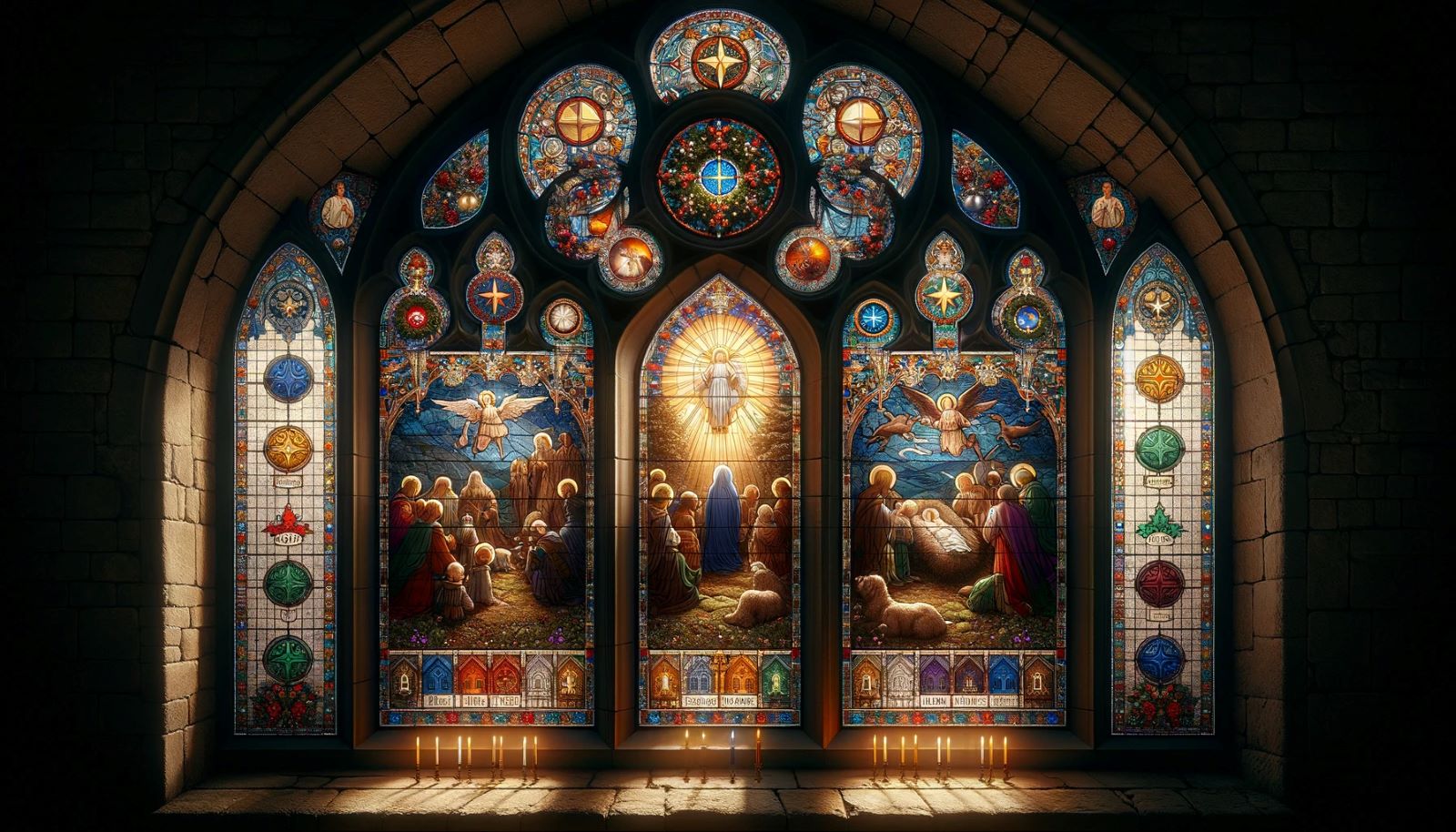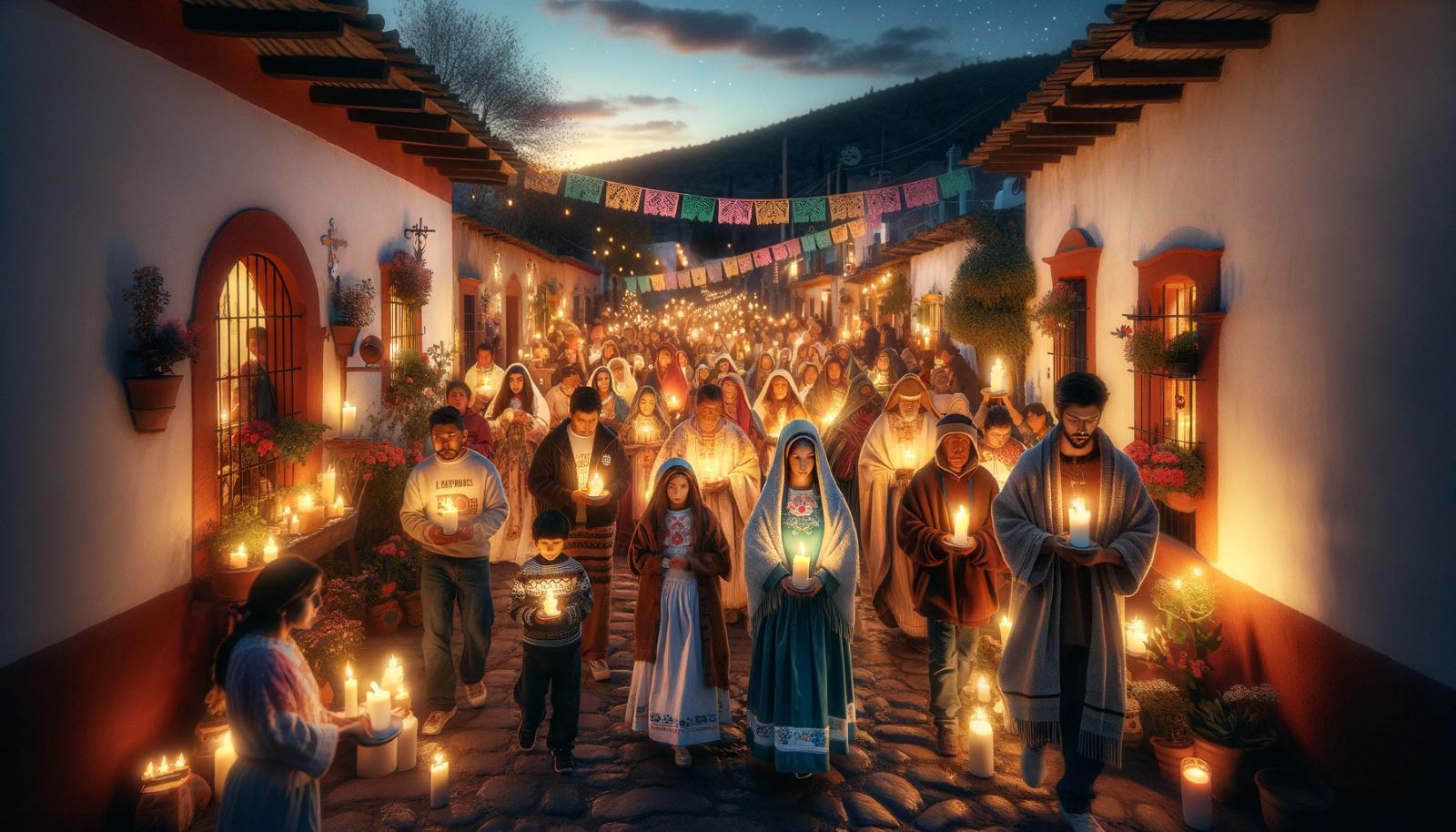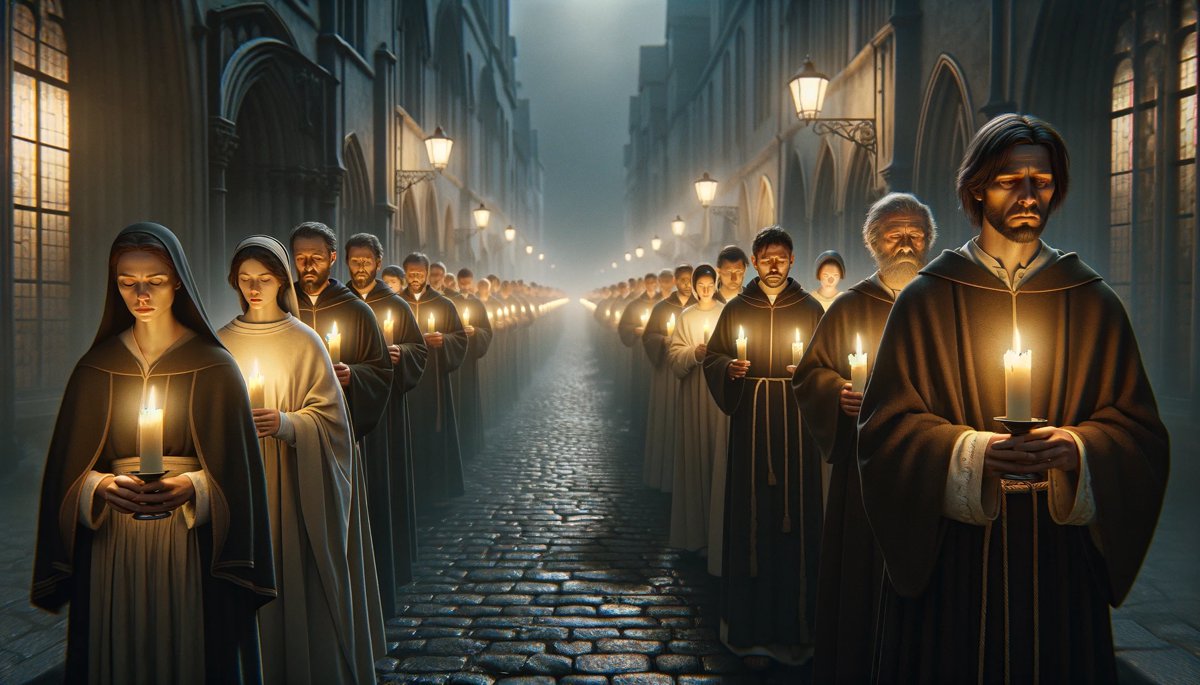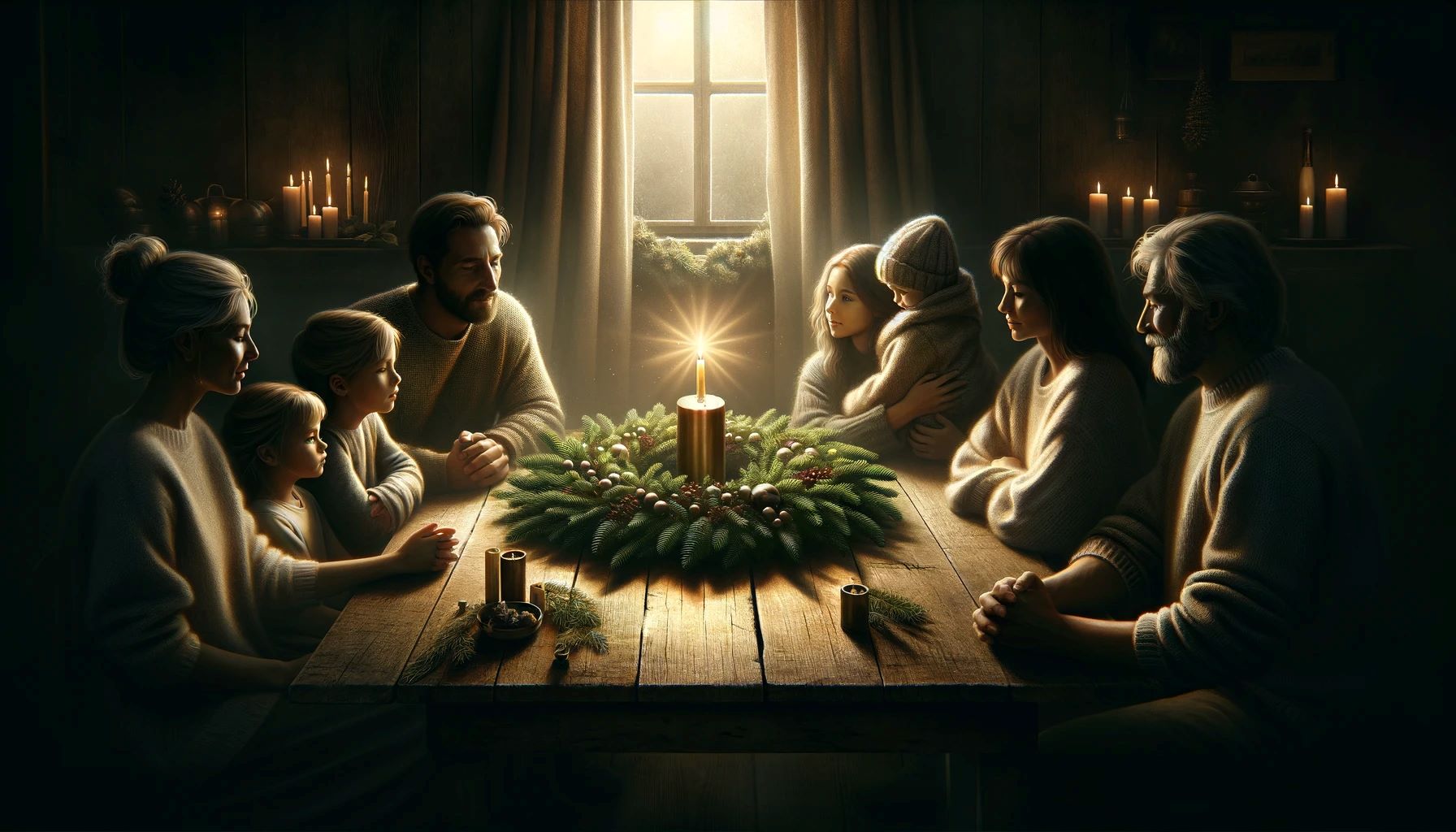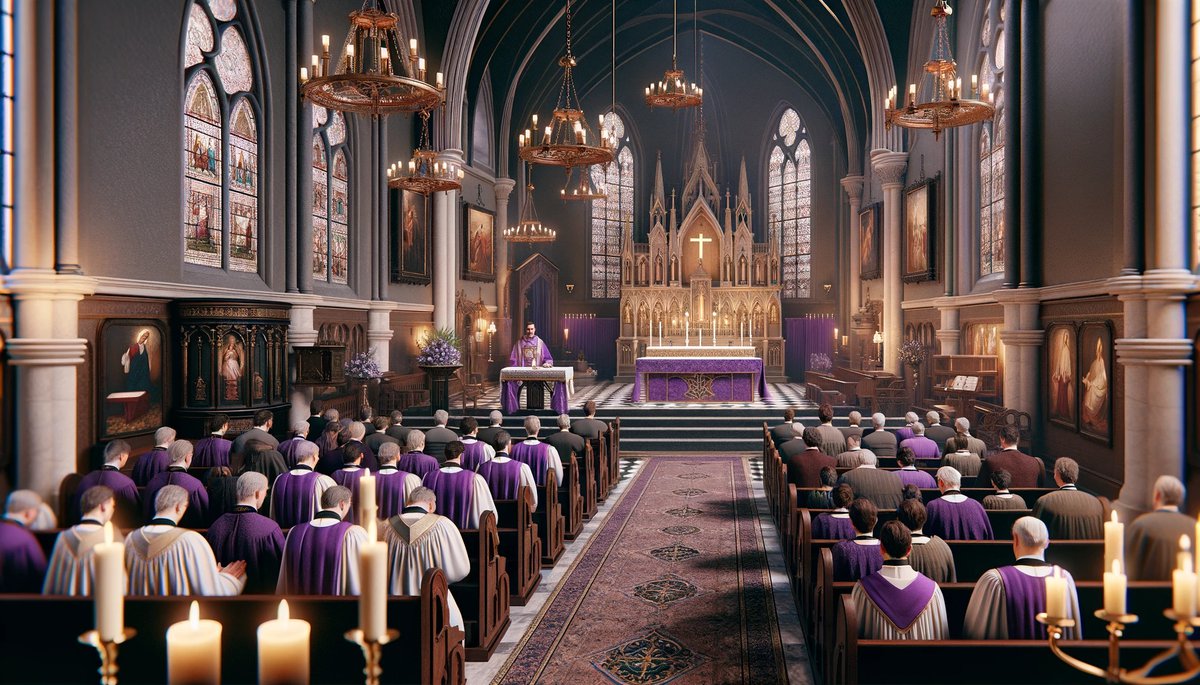Home>Special Themes>Why Is Advent Celebrated


Special Themes
Why Is Advent Celebrated
Published: February 13, 2024
Ericka Andersen, an editor at Christian.net, expertly merges digital strategy with content creation, focusing on faith and societal issues. Her communication skills enhance the platform's engaging narratives, fostering meaningful dialogue on belief's impact on society.
Discover the significance and traditions of Advent, a time of special themes and preparation for the Christmas season. Learn why Advent is celebrated and its importance in the Christian faith.
(Many of the links in this article redirect to a specific reviewed product. Your purchase of these products through affiliate links helps to generate commission for Christian.net, at no extra cost. Learn more)
Table of Contents
Introduction
Advent is a time of joyful anticipation and spiritual preparation for the celebration of the birth of Jesus Christ. It marks the beginning of the liturgical year in the Christian calendar and is a period of profound significance for millions of people around the world. The word "Advent" is derived from the Latin word "adventus," which means "coming" or "arrival." It encapsulates the sense of expectancy and hope as believers await the arrival of the Messiah.
During this sacred season, Christians reflect on the profound mystery of the Incarnation, the belief that God became human in the form of Jesus Christ. It is a time of both solemn reflection and joyful expectation, as believers prepare their hearts to commemorate the birth of Jesus and also look forward to his promised return.
The observance of Advent typically begins on the fourth Sunday before Christmas, which is known as Advent Sunday, and continues through Christmas Eve. This period encompasses four weeks, each representing a different theme: hope, peace, joy, and love. These themes are symbolized by the lighting of candles on an Advent wreath, with each candle representing a different aspect of the spiritual journey towards the celebration of Christ's birth.
As we delve into the rich tapestry of Advent, we will explore its profound meaning, delve into its historical roots, unravel its symbolism, and understand its enduring importance in the Christian faith. Moreover, we will discover how Advent is celebrated today, uniting believers in a shared journey of faith and expectation. Join us on this enlightening exploration of Advent, a time-honored tradition that continues to inspire and uplift hearts across the globe.
Read more: Why Do We Celebrate Advent?
The Meaning of Advent
Advent, in the Christian tradition, holds profound significance as a period of spiritual preparation and joyful anticipation. It serves as a poignant reminder of the centuries-long yearning for the promised Messiah and the hope that his arrival represents. The essence of Advent lies in its dual nature – it is a time of reflection on the birth of Jesus Christ and a season of hopeful expectation for his second coming.
At its core, Advent embodies the spirit of waiting and preparation. It invites believers to embark on a spiritual journey, preparing their hearts and minds to commemorate the birth of Jesus. This period of introspection encourages individuals to reflect on the profound significance of the Incarnation, the belief that God took on human form in the person of Jesus Christ. It is a time to contemplate the divine mystery of God's love made manifest in the vulnerable form of a newborn child.
The four-week duration of Advent is marked by a sense of anticipation, as each week represents a different theme: hope, peace, joy, and love. These themes are symbolized by the lighting of candles on an Advent wreath, with each candle illuminating the path towards the celebration of Christ's birth. The progression of lighting these candles serves as a visual representation of the increasing brightness and hope that Christ brings into the world.
Moreover, Advent serves as a spiritual anchor in the midst of the secular hustle and bustle of the holiday season. It offers a counter-cultural invitation to pause, reflect, and realign priorities, emphasizing the spiritual significance of Christmas amidst the commercialization of the holiday. This intentional focus on spiritual preparation fosters a deeper appreciation for the true meaning of Christmas, transcending materialism and consumerism.
In essence, the meaning of Advent is encapsulated in the intertwining of reflection and anticipation, as believers journey through the weeks leading up to Christmas. It is a time of profound significance, inviting individuals to embrace the transformative power of hope, peace, joy, and love as they prepare to celebrate the birth of Jesus Christ. This sacred season continues to inspire and uplift hearts, serving as a poignant reminder of the enduring message of faith, love, and redemption.
The History of Advent
The history of Advent can be traced back to the early centuries of Christianity, with its origins rooted in the practices of the Western Church. The precise emergence of Advent as a distinct liturgical season is intertwined with the development of the Christian calendar and the evolving traditions of the Church.
The earliest recorded observance of Advent dates back to the 4th and 5th centuries in Gaul (modern-day France), where Christians engaged in a period of fasting and spiritual preparation leading up to the feast of Epiphany. This preparatory period, known as "St. Martin's Lent," served as a time of penitence and reflection, akin to the Lenten season preceding Easter.
Over time, the focus of Advent shifted from preparing for Epiphany to preparing for the celebration of the Nativity of Christ. The duration of Advent varied, with practices differing across regions and communities. However, by the 6th century, the observance of a pre-Christmas fast and spiritual preparation had become more widespread, particularly in the Western Church.
The Council of Tours in 567 AD is credited with formalizing the observance of Advent, establishing a period of fasting and prayer in the weeks leading up to Christmas. This marked a significant step in the institutionalization of Advent as a distinct liturgical season within the Western Church.
The evolving traditions of Advent continued to take shape over the centuries, with the introduction of the Advent wreath in the 16th century adding a symbolic element to the season. The wreath, adorned with candles representing the themes of hope, peace, joy, and love, became a visual focal point of Advent observance, further enriching its significance.
In the 20th century, the liturgical reforms of the Second Vatican Council brought about a renewed emphasis on the spiritual themes of Advent, emphasizing the dual nature of the season as a time of reflection on the Incarnation and a period of hopeful anticipation for Christ's return.
Today, the history of Advent stands as a testament to the enduring legacy of spiritual preparation and joyful expectation that has characterized this sacred season for centuries. It serves as a bridge connecting the ancient traditions of the Church with the contemporary expressions of faith, uniting believers in a shared journey of reverence and anticipation as they prepare to celebrate the birth of Jesus Christ.
The Symbolism of Advent
The symbolism of Advent is deeply woven into the fabric of Christian tradition, encapsulating profound spiritual themes and evoking a sense of anticipation and hope. At the heart of Advent lies the symbolism of the Advent wreath, a cherished emblem that embodies the essence of the season.
The Advent wreath, typically adorned with evergreen foliage and four candles, serves as a visual representation of the spiritual journey towards the celebration of Christ's birth. Each candle on the wreath holds symbolic significance, representing the themes of hope, peace, joy, and love. As the weeks of Advent progress, these candles are successively lit, illuminating the path towards the joyous commemoration of the Nativity.
The first candle, often purple or blue, symbolizes hope and is known as the "Prophet's Candle." It signifies the anticipation of the Messiah's coming and the hope that Christ brings into the world. The second candle, also purple or blue, represents peace and is called the "Bethlehem Candle," signifying the peace that Christ's birth brings to humanity. The third candle, pink or rose in color, symbolizes joy and is referred to as the "Shepherd's Candle," representing the joyous proclamation of the Good News by the shepherds. The fourth candle, again purple or blue, signifies love and is known as the "Angel's Candle," embodying the love that God bestowed upon the world through the gift of His Son.
The lighting of these candles not only serves as a visual reminder of the spiritual themes of Advent but also illuminates the progression from darkness to light, symbolizing the increasing hope and anticipation as the celebration of Christ's birth draws near. The evergreen foliage of the wreath further reinforces the symbolism of eternal life and the enduring nature of God's love and grace.
Moreover, the Advent wreath serves as a focal point for communal and individual reflection, fostering a sense of unity and shared spiritual journey among believers. It provides a sacred space for contemplation, prayer, and the cultivation of a hopeful and expectant spirit as the faithful prepare to welcome the Christ Child into their hearts and homes.
In essence, the symbolism of Advent, embodied by the Advent wreath, encapsulates the timeless themes of hope, peace, joy, and love, inviting believers to embark on a transformative spiritual journey as they prepare to celebrate the birth of Jesus Christ. It serves as a poignant reminder of the enduring message of faith, love, and redemption, resonating across generations and uniting hearts in joyful anticipation.
The Importance of Advent in Christianity
The significance of Advent in Christianity extends far beyond the ceremonial observance of a liturgical season. It holds profound spiritual and theological importance, serving as a foundational pillar of the faith and a poignant reminder of the core tenets of Christian belief.
At its essence, Advent embodies the timeless message of hope, peace, joy, and love, encapsulating the fundamental principles of the Christian faith. It serves as a period of spiritual preparation, inviting believers to reflect on the profound mystery of the Incarnation and the transformative impact of Christ's birth on humanity.
Advent underscores the central narrative of the Christian faith – the anticipation of the promised Messiah and the fulfillment of God's covenant with humanity. It serves as a bridge between the Old Testament prophecies foretelling the coming of the Savior and the New Testament fulfillment of these prophecies in the birth of Jesus Christ. This sacred season invites believers to immerse themselves in the rich tapestry of biblical narratives, fostering a deeper understanding of the redemptive promise fulfilled through the birth of Jesus.
Furthermore, the observance of Advent fosters a sense of communal unity and shared spiritual journey among believers. It provides a collective opportunity for the faithful to engage in prayer, reflection, and worship, strengthening the bonds of fellowship and reinforcing the foundational truths of the Christian faith. The themes of hope, peace, joy, and love, symbolized by the lighting of candles on the Advent wreath, serve as guiding beacons, illuminating the path towards a deeper connection with God and a renewed commitment to living out the principles of faith in daily life.
Moreover, Advent serves as a counter-cultural invitation to reorient priorities and refocus on the spiritual significance of Christmas amidst the secular trappings of the holiday season. It offers a sacred space for believers to transcend the materialism and consumerism that often overshadow the true meaning of Christmas, emphasizing the enduring message of faith, love, and redemption.
In essence, the importance of Advent in Christianity lies in its capacity to rekindle the flame of faith, renew the spirit of hope, and reaffirm the transformative power of God's love. It stands as a timeless testament to the enduring message of the Christian faith, uniting believers in a shared journey of anticipation and reverence as they prepare to celebrate the birth of Jesus Christ.
Read more: Which Countries Celebrate Advent
How Advent is Celebrated Today
In contemporary times, the observance of Advent encompasses a rich tapestry of traditions and practices that resonate with the enduring spirit of anticipation and hope. While the core themes of hope, peace, joy, and love remain central to the celebration, the modern-day observance of Advent reflects a harmonious blend of cherished customs and innovative expressions of faith.
One of the hallmark traditions of Advent is the lighting of the Advent wreath. Families and congregations gather to light the candles on the wreath, often accompanied by readings and prayers that correspond to each week's theme. This ritual serves as a focal point for communal reflection, fostering a sense of unity and shared spiritual journey among participants. The gentle glow of the candles symbolizes the increasing brightness and hope that Christ brings into the world, infusing the season with a profound sense of anticipation and reverence.
In many Christian communities, the observance of Advent extends beyond the walls of churches and into the home. Families often create their own Advent wreaths, engaging in the ritual of lighting the candles and engaging in meaningful discussions about the significance of each theme. This practice serves as a powerful means of passing down the rich traditions of Advent from one generation to the next, fostering a sense of continuity and spiritual connection within the family unit.
Another cherished tradition that has gained prominence in modern Advent observance is the Advent calendar. This beloved custom, often tailored to appeal to children, features a series of numbered doors or compartments, each concealing a small gift, scripture verse, or act of kindness. The daily unveiling of these surprises serves as a joyful countdown to Christmas, infusing the season with a sense of eager anticipation and childlike wonder.
Furthermore, Advent is celebrated through a myriad of musical expressions, including the singing of traditional hymns and the performance of Advent-themed choral and orchestral works. These musical offerings serve to enrich the spiritual atmosphere of the season, evoking a sense of reverence and awe as believers prepare to commemorate the birth of Jesus Christ.
In the digital age, the observance of Advent has also found expression through online communities and virtual gatherings. Churches and faith-based organizations utilize social media platforms and digital resources to share daily reflections, devotions, and interactive experiences that engage participants in a collective journey of spiritual preparation and joyful anticipation.
In essence, the modern celebration of Advent is a vibrant tapestry of cherished traditions, innovative practices, and communal expressions of faith. It serves as a testament to the enduring relevance of the season, uniting believers in a shared journey of reflection, anticipation, and spiritual renewal as they prepare to welcome the Christ Child into their hearts and homes.
Conclusion
In conclusion, Advent stands as a timeless testament to the enduring message of hope, peace, joy, and love that lies at the heart of the Christian faith. This sacred season, marked by a spirit of anticipation and spiritual preparation, serves as a poignant reminder of the profound significance of the Incarnation and the transformative impact of Christ's birth on humanity.
The rich tapestry of Advent, woven with traditions, symbolism, and communal expressions of faith, continues to resonate across generations, uniting believers in a shared journey of reverence and anticipation. The lighting of the Advent wreath, the singing of traditional hymns, the observance of cherished customs, and the innovative expressions of faith in the digital age all contribute to the vibrant celebration of Advent in contemporary times.
Moreover, the enduring importance of Advent in Christianity transcends the confines of a liturgical season, embodying the foundational principles of the Christian faith. It serves as a bridge connecting the ancient traditions of the Church with the contemporary expressions of faith, fostering a sense of communal unity and shared spiritual journey among believers.
As we immerse ourselves in the timeless themes of hope, peace, joy, and love, symbolized by the progression of lighting candles on the Advent wreath, we are reminded of the enduring message of faith, love, and redemption. Advent offers a sacred space for believers to transcend the materialism and consumerism that often overshadow the true meaning of Christmas, emphasizing the spiritual significance of the season amidst the secular trappings of the holiday.
In essence, Advent continues to inspire and uplift hearts, inviting individuals to embrace the transformative power of hope and anticipation as they prepare to celebrate the birth of Jesus Christ. It serves as a poignant reminder of the enduring message of faith, love, and redemption, resonating across generations and uniting hearts in joyful anticipation. As we journey through the sacred season of Advent, may its timeless themes illuminate our hearts and minds, fostering a spirit of hope, peace, joy, and love that transcends the boundaries of time and tradition.
